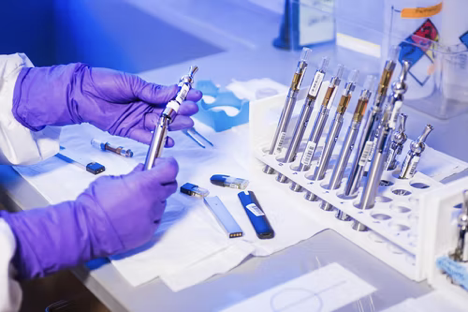The ear, nose, and throat (ENT) system of the body plays a huge role in the performance and well-being of the entire body. This system is responsible for processing solid, liquid, and gaseous fuel for the body. It’s also connected to the ear canals and sits at a critical part of the human anatomy. Damage to the ENT system can impact a lot of other surrounding systems such as the eyes, brain, heart, lungs, and other components.
Collectively these are some of the most precious parts of the human body and are quite sensitive as well. A tracheostomy is a surgical procedure that aims to fix the air supply to the lungs by giving the body an artificial way of breathing. The ability to breathe and to get air into the system is crucial. It is even more critical for young children and elderly individuals to be able to get enough air and for the systems required to process that air to be healthy.
While it may sound overwhelming, the procedure is rather simple. Here are a few things to know about a tracheostomy.
1. Who Needs Tracheostomy
Tracheostomy procedures are very common and they are most frequently carried out on young children and elderly patients. These two groups of people often face problems that make it hard for them to breathe. Moreover, complications with the breathing system for these two groups can lead to other medical problems. Since both children and elderly patients have weaker immune systems and it’s harder for them to recover from injuries, infections, viruses, and other problems, it is critical for a tracheostomy to be carried out quickly. In many situations, tracheostomy becomes the only way a patient can be kept alive. In some cases, it is used as a temporary solution while for other patients it can be a permanent change.
2. Types Of Tracheostomy
There are two main types of tracheostomy, surgical tracheostomy, and percutaneous tracheostomy.
Surgical tracheostomy, as the name implies, is a surgical procedure that will be conducted in a hospital in the operation theater. This is commonly used in situations where installing the tracheostomy device is going to be a complicated procedure or where there are other problems that need to be addressed for the medical supplies necessary to be installed. The most common challenge, in this case, is the thyroid gland. Usually, surgeons will carefully remove a small part of the gland in order to gain access to the base of the neck where the hardware needs to be installed.
Percutaneous tracheostomy is also a surgical procedure but it is a bit quicker to perform and in most cases, the patient will not need to be given anesthesia either. In this case, the surgeon will put a camera down the patient’s throat to get an inside view of the throat. Using this input, the surgeon will decide on the best place to make an incision to put the tracheostomy tube. Usually, this will be at the base of the neck. Using a needle, the surgeon will make a small hole in the airway and then expand the hole to the required size for the tube to be inserted.
3. Tracheostomy Situations
One of the most common reasons for getting a tracheostomy is when people are being shifted from ventilators to living with a ventilator. On the ventilator, the patient is unable to breathe on their own so they need to use this equipment. After spending a lot of time on the ventilator, the patient will need assistance to breathe on their own so they are given a tracheostomy.
With a bit of practice, the patient learns to breathe independently and at that point, the tracheostomy is removed. Another common situation is a car accident in which the patient has sustained spinal injuries. This can cause them to lose control over their chest and breathing so they need an artificial way to support their breathing.
4. Possible Risks
Tracheostomy procedures are quite safe to perform. The main risk arises in regards to the maintenance of the tracheostomy. Our mouth and nose help regulate the air that reaches our lungs. People with a tracheostomy don’t have this ability so their lungs produce more mucus due to the irritation to compensate. They face extra problems in the area with excessively dry air or extremely cold air. This causes the tube to get filled with mucus. Patients need to take extra care of the hardware in their tracheostomy and make sure it is very clean at all times. Servicing the hardware is very simple but it needs to be done regularly.
5. Life With Tracheostomy
Tracheostomy has a huge impact on a patient’s life. They aren’t usually able to talk, they can’t eat or drink like they used to, they have to be very conscious of the air quality around them, they have to be careful to sleep in the right position, and some other changes to make sure the tracheostomy is safe and functioning as it should. While a person can still live their day-to-day life, it is a bit challenging to adjust to all these changes.
Especially for someone who was used to living a regular life without any breathing problems. While they have to be a bit more careful due to the tracheostomy implant, there’s no reason they can’t still enjoy the lifestyle they’re used to.
6. Care
Each tracheostomy is a little different based on the specific nature of that installation. The main thing that people need to be careful about is the cleanliness of the tube. It is more challenging at first when a person is getting used to living with a tracheostomy but everything gets easier with practice. As long as the tube is clean, the installation is secured to the body properly and the patient is careful not to get dirt or anything else into the tube, it can be used comfortably. Also, people need to learn how to deal with other problems that could arise due to the tube such as infections.
In most cases, people with a tracheostomy are also dealing with other serious problems and are admitted to the ICU. In some cases, patients are allowed to go back home with the tracheostomy and they are the ones that need to be a bit more careful. Getting the tracheostomy removed is also a slow process. The patient first needs to start regaining use of their throat and air passage bit by bit and then eventually the tube is removed once they are able to eat, drink, speak and breathe through their nose.



















Follow Us